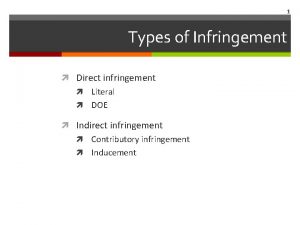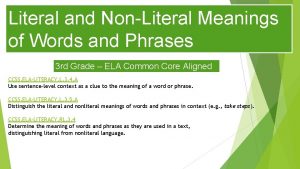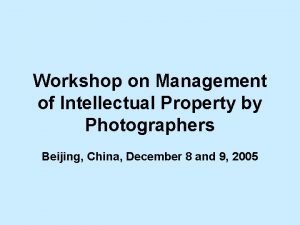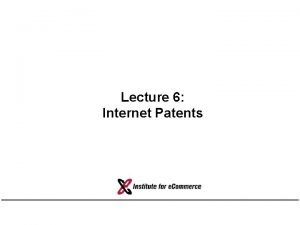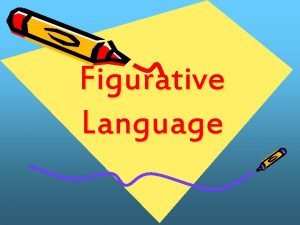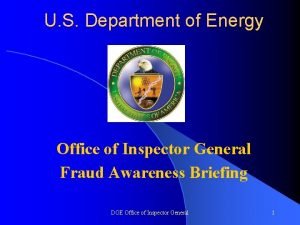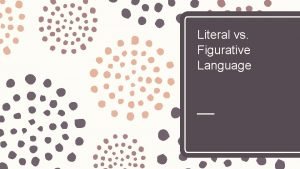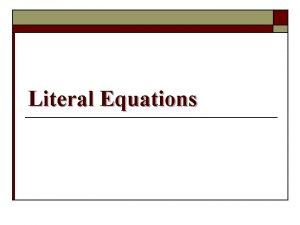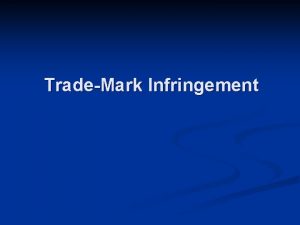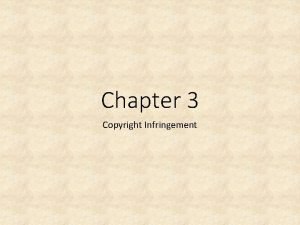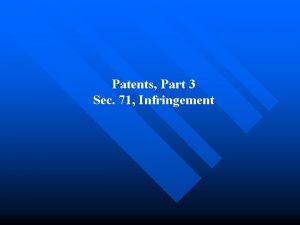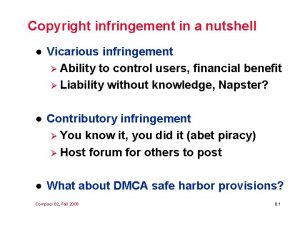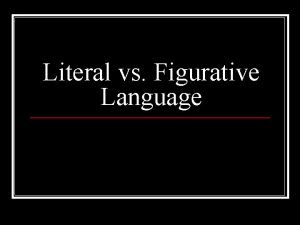1 Types of Infringement Direct infringement Literal DOE













- Slides: 13

1 Types of Infringement Direct infringement Literal DOE Indirect infringement Contributory infringement Inducement

2 Literal Infringement If accused infringer has made, used, sold, offered for sale, or imported into the US, an article that literally contains each element of one or more claims, he’s said to literally infringe 112/6 literal infringement If structures/steps in accused device/process perform the recited function and are the same or equivalent to one of the structures shown in the patent that performs the same function Direct infringement requires that a party perform or use every step of a claimed method

3 Literal Infringement A, B, C A A, B, C, D Infringement A, B, C A, B, D No infringement

4 Doctrine of Equivalents If accused infringer has made. . . an article where, to the extent a claim element is not literally satisfied, it is satisfied by an equivalent structure Structure is equivalent if it performs substantially the same function, in substantially the same way, to produce substantially the same result Prosecution history often impacts availability of DOE If during prosecution, the claim was narrowed in attempt to secure patent, patentee is estopped from later arguing infringement of that claim under DOE

5 Contributory Infringement If accused contributory infringer has sold, offered to sell, or imported into US, a component of a product (or apparatus used in a process) Component (or apparatus) has no substantial non-infringing use Component (or apparatus) constitutes a material part of invention Accused contributory infringer is aware of patent and knows it may cover the component/apparatus Use of component (or apparatus) directly infringes the claim

6 Inducement Alleged inducer took action during life of patent intending to induce acts by putative direct infringer Alleged inducer was aware of patent and knew that the acts he intended to induce, if taken, would constitute infringement of patent, and Willful blindness will satisfy requirement of knowledge of patent Willful blindness: putative inducer’s belief that patented product exists and that putative inducer took deliberate steps to avoid knowing that fact Acts are actually performed by a single direct infringer and directly infringe that claim (but see Akamai exception)

7 Scenarios from ‘ 586 Patent ‘ 586 requires: a package having a flexible cover a food article packaged therein and spaced downwardly from the cover a unitary molded plastic package saving device. . . said device comprising the combination of three or more spaced legs. . .

8 ‘ 586 Scenarios Cont’d Assume: X makes and sells package savers X saw patent number on package saver that it modeled its package saver after X sells to, among others, pizza parlor Z Y sells Z the pizza boxes it uses Y is aware of the ‘ 586 patent but says nothing to Z about the package saver Y sells its pizza boxes to other pizza parlors that do not use package savers Z is unaware of ‘ 586 patent Z sells pizza in cardboard box with package saver in place Z delivers packaged pizza to A

9 ‘ 586 Scenarios Cont’d Who are the direct infringers? X, Y, Z, A? Who are the contributory infringers? X, Y, Z, A? Who are the inducers? X, Y, Z, A

10 Joint Infringement and Inducement of Method Claims Direct infringement requires that a party perform or use every step of a claimed method. Where no single party performs all of the steps of a claimed method but more than one party performs every step of the method, the claim is directly infringed if one party has control over the entire method so that the steps are attributable to the controlling party. What about requirement of direct infringement for inducement? Under Akamai, inducement may be found if all of the steps of the method claim have been performed and the other requirements for inducement have been satisfied

11 Scenarios from ‘ 168 Patent? ‘ 168 requires: reducing the annular stenosed area within an artery advancing a radioactive dose means within the artery to the area of reduced stenosis the radioactive dose means being operatively connected to positioning means and the advancing step being performed by moving the positioning means applying a radioactive dose to the area of reduced stenosis by exposing the area of reduced stenosis to the radioactive dose means; and removing the dose means from the artery by moving the positioning means

12 ‘ 168 Scenarios Cont’d Assume: Novoste sells Beta-Cath to hospital H H permits use of only Beta-Cath, is aware of ‘ 168 patent, and has concluded Beta-Cath is covered by it Interventional cardiologist I (under the direction of J) performs angioplasty on patient P in preparation for use of Beta-Cath Brachytherapy (use of Beta-Cath) performed on P by interventional cardiologist J Pellet train used in Beta-Cath is specially made for Novoste by T

13 ‘ 168 Scenarios Cont’d Who are the direct infringers? Novoste, H, I, P, J, T? What if I not under control of J? Who are the contributory infringers? Novoste, H, I, P, J, T? Who are the inducers? Novoste, H, I, P, J, T? What if I not under control of J?
